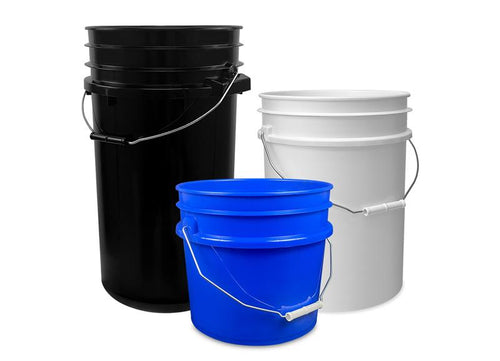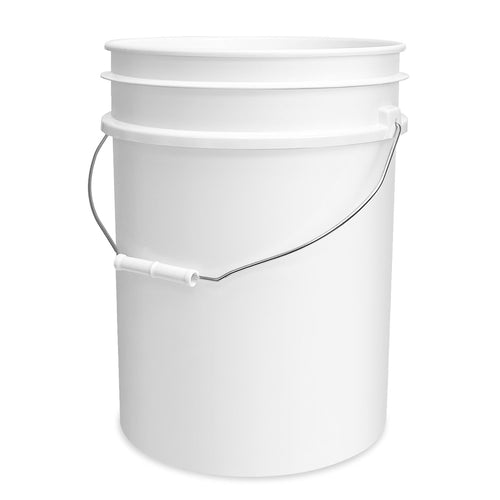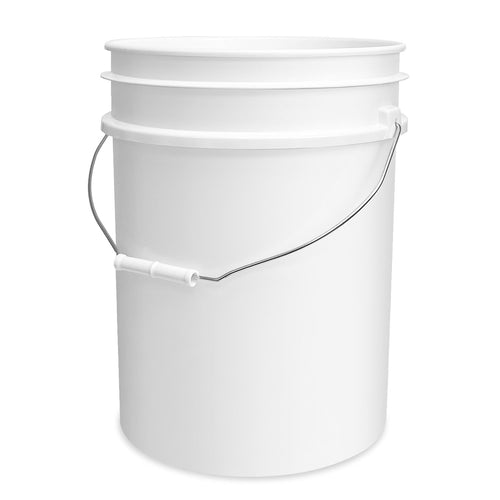Protect Your Business and Bottom Line with Proper Hazmat Packaging
For many businesses, shipping a product is as simple as putting it in a box and sending it off. But if your business handles chemicals, aerosols, paints, or even certain batteries, the process becomes far more complex. These "hazardous materials" require specialized packaging that meets stringent international standards – often indicated by a UN rating.
At ePackageSupply, we understand that navigating hazardous materials regulations can be daunting. But understanding UN ratings isn't just about compliance – it's about ensuring safety, preventing costly fines, and maintaining your ability to ship critical products globally. Let's demystify UN ratings and explain why they're absolutely vital for businesses shipping hazardous materials.
UN Ratings Decoded: Your Essential Guide to Safe Hazardous Material Shipping
What Is a UN Rating?
A UN rating, or United Nations (UN) Packaging Code, is an internationally recognized standard for the safe transportation of hazardous materials. Developed by the United Nations Committee of Experts on the Transport of Dangerous Goods, this system provides a universal language for manufacturers, shippers, and carriers to identify packaging that has been tested and certified to safely contain specific types of dangerous goods during transit.
Think of a UN rating as a passport for your hazardous materials. Just as a passport confirms your identity and allows you to travel internationally, a UN rating on a container (like a drum, box, or pail) confirms that the packaging has passed rigorous performance tests. It verifies the container's ability to hold its contents without leakage or compromise, even under the challenging conditions encountered during transportation.
Why UN-Rated Packaging Matters: Safety, Compliance, and Global Reach
The importance of UN-rated packaging extends far beyond a simple regulatory checkbox. It's foundational to the safe and legal movement of hazardous materials worldwide.
✅ Key Benefits of UN-Rated Packaging
🛡️ Ensuring Safety
Prevents catastrophic events like explosions, fires, chemical burns, and environmental pollution by containing hazardous materials properly during transit.
⚖️ Regulatory Compliance
Meets international and national regulations (like U.S. DOT's PHMSA requirements), avoiding severe penalties, legal liabilities, and potential imprisonment.
🌍 International Shipments
Essential for global trade – your packaging must carry the appropriate UN mark to be accepted by customs and transportation authorities worldwide.
📦 Carrier Acceptance
Most reputable freight carriers (airlines, shipping lines, trucking companies) refuse to transport hazardous materials without proper UN-rated containers.
💼 Risk Mitigation
Significantly reduces the risk of leaks, spills, and damage during transit, protecting your products, reputation, and bottom line from costly incidents.
Decoding the UN Rating: Understanding the Code

Visual guide to understanding UN rating codes
A UN rating might look like a complex sequence of alphanumeric characters, but each part tells a specific story about the packaging's specifications and performance capabilities. Understanding this code is crucial for selecting the right packaging for your hazardous materials.
4G/Y145/S/09/USA/+CC5754
Example UN Rating Code
Let's break down this typical UN rating code:
Packaging Type Symbol (e.g., 4G)
- The first number indicates the type of packaging (e.g., 1 for drum, 2 for barrel, 3 for jerrican, 4 for box, 5 for bag).
- The letter indicates the material of construction (e.g., A for steel, B for aluminum, G for fiberboard, H for plastic, F for plywood, L for textile, M for paper, N for metal other than steel or aluminum).
Example: 4G means a fiberboard box.
Packing Group Performance Level (e.g., Y)
This letter signifies the performance level the packaging is certified for, corresponding to the danger level of the hazardous material it can contain:
- X: For high danger (Packing Group I substances)
- Y: For medium danger (Packing Group II substances)
- Z: For minor danger (Packing Group III substances)
Example: Y indicates the packaging is suitable for medium danger materials (Packing Group II) and, by extension, also minor danger materials (Packing Group III).
Maximum Gross Mass (for Solids) or Specific Gravity (for Liquids) (e.g., 145)
- If the inner packaging contains solids, this number indicates the maximum gross mass (in kilograms) of the package as packed for testing (packaging + contents).
- If the inner packaging contains liquids, this number represents the specific gravity (or relative density) of the liquid for which the design was tested.
Example: 145 means the box can hold a maximum gross mass of 145 kg if packed with solids, or it was tested with a liquid having a specific gravity of 1.45.
Solid or Inner Packaging (e.g., S) or Hydraulic Pressure Test (for Liquids)
- S: Indicates the packaging is suitable for solids or inner packagings. If "S" is present, it means the package was tested with solids or with inner containers holding liquids.
- Numerical Value (kPa): If the packaging is for liquids and not marked "S", this number represents the hydraulic test pressure (in kilopascals) that the package withstood.
Example: S means this fiberboard box is for solids or contains inner packagings.
Year of Manufacture (e.g., 09)
The last two digits of the year the packaging was manufactured or retested.
Example: 09 means the year 2009.
Country Authorizing Certification (e.g., USA)
The country that authorized the certification of the packaging.
Example: USA means the certification was authorized in the United States.
Manufacturer or Testing Laboratory Code (e.g., +CC5754)
A unique code assigned by the national authority (e.g., DOT in the USA) to the packaging manufacturer or the testing laboratory that performed the certification.
Example: +CC5754 is a unique identification code.
| Code Part | What It Means | Example Explanation |
|---|---|---|
| 4G | Packaging Type: First number = package type (1=drum, 2=barrel, 3=jerrican, 4=box, 5=bag); Letter = material (A=steel, G=fiberboard, H=plastic) | 4G = Fiberboard box |
| Y | Performance Level: X = High danger (Packing Group I), Y = Medium danger (Packing Group II), Z = Minor danger (Packing Group III) | Y = Suitable for medium danger materials |
| 145 | Mass/Gravity: For solids = max gross mass (kg); For liquids = specific gravity | 145 = Max 145 kg for solids or 1.45 specific gravity for liquids |
| S | Contents Type: S = Solids or inner packagings; Number = Hydraulic test pressure (kPa) for liquids | S = For solids or contains inner packagings |
| 09 | Year: Last two digits of manufacture/retest year | 09 = Year 2009 |
| USA | Country: Country authorizing certification | USA = Certified in United States |
| +CC5754 | Manufacturer Code: Unique ID assigned by national authority | +CC5754 = Manufacturer's unique identification |
Who Needs UN-Rated Packaging?
Any business that ships hazardous materials needs UN-rated packaging. This requirement spans a vast array of industries and products that you might not immediately consider "hazardous."
Industries & Products Requiring UN-Rated Packaging
Chemical Manufacturing
Solvents, acids, bases, glues, resins
Paints & Coatings
Flammable paints, thinners, aerosols
Automotive
Batteries (especially lithium-ion), brake fluid, engine additives
Pharmaceuticals & Healthcare
Certain disinfectants, lab reagents
Cosmetics & Personal Care
Aerosol hairsprays, nail polish removers
Cleaning Products
Bleach, strong detergents
Agriculture
Pesticides, fertilizers
Electronics
Devices containing lithium batteries
It's crucial to correctly classify your material according to hazard classes (e.g., flammable liquid, corrosive, oxidizer) to determine the appropriate packing group (X, Y, or Z) and thus the necessary UN-rated packaging.
Consequences of Non-Compliance
Ignoring UN rating requirements isn't just a minor oversight – it can lead to severe repercussions that impact your business operations, finances, and reputation.
⚠️ Risks of Non-Compliance
💸 Hefty Fines
Federal fines for hazmat violations can reach tens of thousands of dollars per violation per day.
🚫 Shipment Delays/Refusals
Incorrectly marked packages will be refused by carriers, causing delays, re-packaging costs, and loss of customer trust.
🔥 Safety Incidents
Improper packaging increases risks of accidents, spills, fires, injuries, property damage, and environmental contamination.
⚖️ Legal Liability
Non-compliant businesses face significant legal liabilities and reputational damage in the event of incidents.
Choosing the Right UN-Rated Packaging
Selecting the correct UN-rated packaging isn't a "one-size-fits-all" decision. It requires careful consideration of several critical factors:
📋 Key Selection Criteria
- Hazard Class and Packing Group: The most important factor, determining the required performance level (X, Y, or Z)
- State of Material: Solid or liquid? This dictates whether the UN rating includes "S" or a hydraulic test pressure
- Quantity and Inner Packaging: Bulk shipping or smaller inner containers (e.g., bottles inside a box)?
- Mode of Transportation: Air, sea, rail, or road transport may have additional requirements (e.g., IATA for air cargo)
- Chemical Compatibility: Ensure the packaging material itself is chemically compatible with your hazardous substance
Partner with ePackageSupply for UN-Rated Solutions
Navigating the complexities of UN ratings and hazardous material packaging requires expertise and reliable partners. At ePackageSupply, we offer a range of UN-rated packaging solutions, including UN-rated Tight Heads and 5 Gallon Buckets, all certified to meet stringent safety and regulatory standards.
Our experienced team is equipped to help you:
- Identify the correct packaging for your specific hazardous materials
- Ensure compliance with national and international shipping regulations
- Find the right balance between safety, compliance, and cost-effectiveness
- Navigate complex regulatory requirements with confidence
Frequently Asked Questions
Q: What is a UN Rating?
A: A UN rating, or United Nations (UN) Packaging Code, is an internationally recognized standard for the safe transportation of hazardous materials. It signifies that the packaging has been tested and certified to safely contain specific dangerous goods under conditions encountered during transit.
Q: Why is UN-rated packaging important for businesses?
A: UN-rated packaging is crucial for several reasons: it ensures safety by preventing hazardous material incidents, guarantees regulatory compliance to avoid fines and legal issues, is often mandatory for international shipments, ensures acceptance by freight carriers, and significantly mitigates risks during transit.
Q: Who needs to use UN-rated packaging?
A: Any business that ships hazardous materials needs UN-rated packaging. This includes a wide array of industries and products, such as chemicals, paints, batteries, pharmaceuticals, certain cleaning products, and even some cosmetics and electronics.
Q: What are the consequences if a business does not use UN-rated packaging for hazardous materials?
A: Non-compliance can lead to severe consequences, including hefty fines (often tens of thousands of dollars per violation), shipment delays or refusals by carriers, increased risk of safety incidents, and significant legal liabilities in the event of an accident.
Q: How do I know which UN rating I need for my products?
A: The correct UN rating depends on your material's hazard class and packing group. You'll need to classify your material according to its specific hazards (flammable, corrosive, toxic, etc.) and determine whether it falls into Packing Group I (high danger), II (medium danger), or III (minor danger). Our team at ePackageSupply can help you make this determination.
Q: Can I reuse UN-rated packaging?
A: Some UN-rated packaging can be reused if it remains in good condition and is recertified according to regulations. However, certain types of packaging are designed for single use only. Always check the specific regulations for your packaging type and consult with experts before reusing any hazmat packaging.
Don't Leave Safety to Chance!
Ship with confidence using certified UN-rated packaging solutions
📞 Call (888) 631-0888 to discuss your UN-rated packaging requirements

 Violet Zhang
Violet Zhang
















































